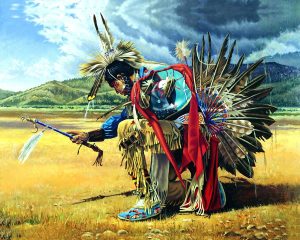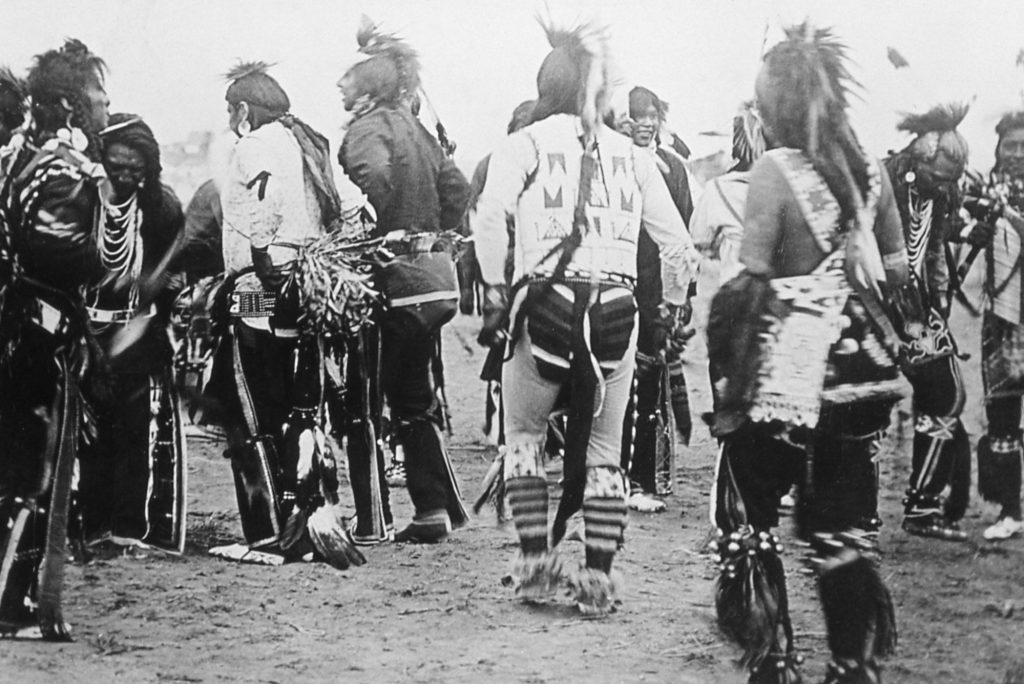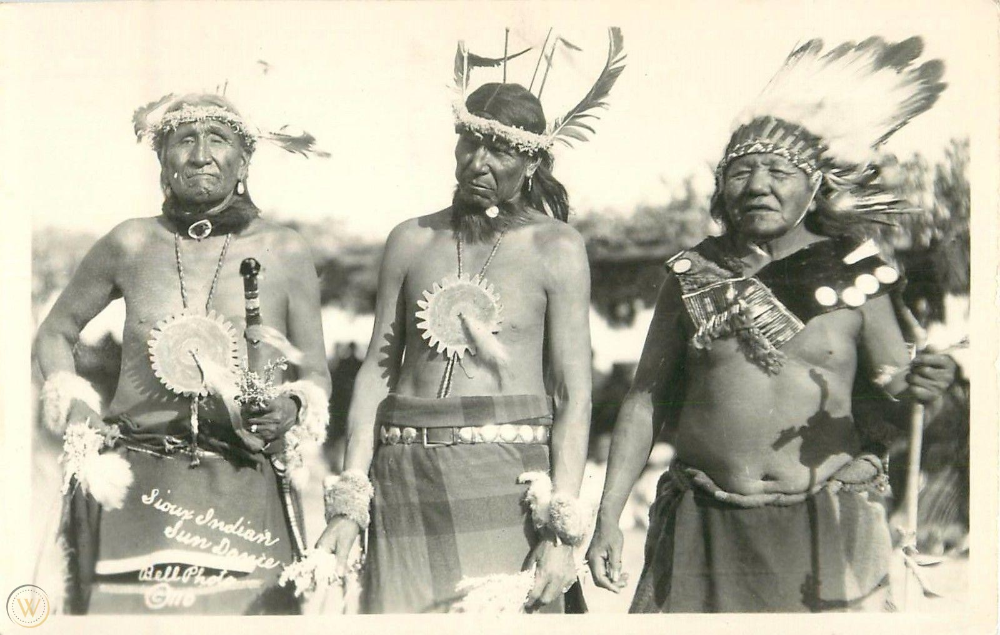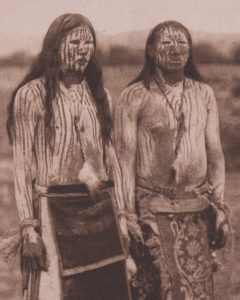Summer Solstice, Native American Traditions
By Justo
Posted on June 13, 2025
Reposted from Native Tribe Info
 Readers, have you ever wondered about the rich tapestry of Native American Summer Solstice traditions? These celebrations, deeply rooted in history and spirituality, hold a profound significance for numerous Indigenous communities across North America. They are far more than simple seasonal observances; they are vibrant expressions of cultural identity, reverence for nature, and a connection to ancestral wisdom. This exploration delves into the diverse practices and meanings surrounding Native American Summer Solstice traditions, drawing upon extensive research and analysis of this fascinating topic.
Readers, have you ever wondered about the rich tapestry of Native American Summer Solstice traditions? These celebrations, deeply rooted in history and spirituality, hold a profound significance for numerous Indigenous communities across North America. They are far more than simple seasonal observances; they are vibrant expressions of cultural identity, reverence for nature, and a connection to ancestral wisdom. This exploration delves into the diverse practices and meanings surrounding Native American Summer Solstice traditions, drawing upon extensive research and analysis of this fascinating topic.
Understanding the Significance of the Summer Solstice
For many Native American cultures, the summer solstice, the longest day of the year, represents a time of renewal, abundance, and spiritual reflection. It marks the peak of the growing season, a time when the earth’s bounty is at its fullest. This is a period of celebration and gratitude for the gifts provided by nature.
The solstice is not just about the sun; it’s intrinsically entwined with the spiritual beliefs and cosmology of individual tribes. The summer solstice often coincides with vital ceremonies, rituals, and communal gatherings, signifying the ongoing relationship between humanity and the natural world.
Cosmic Connections and Celestial Alignments
Many Native American cultures observed the solstice’s astronomical significance. Precise knowledge of celestial movements was integral to their understanding of time and its cycles. This understanding informed their agricultural practices, social structures, and spiritual beliefs. The summer solstice often marked important moments in their calendar year, influencing planting and harvesting schedules.
Detailed astronomical observations allowed for accurate predictions of seasonal changes. This foresight provided a crucial advantage in planning for survival and prosperity. These ancient observations demonstrate a deep connection between indigenous knowledge and the natural world.
Indigenous astronomers developed sophisticated methods for tracking celestial events. These methods allowed for precise predictions that were crucial to the survival and prosperity of their communities. This intricate knowledge system was passed down through generations, preserving vital information for future generations.
The Sun’s Power and its Symbolism
The summer solstice is, fundamentally, a celebration of the sun’s power. The sun’s life-giving energy is recognized as essential for the growth of crops and the sustainment of life itself. Native American cultures often incorporated solar symbolism into their ceremonies and artwork. In many traditions, the sun is revered as a powerful deity or a vital symbol.
The sun’s energy is not just seen as physical; it’s often regarded as deeply spiritual. The solstice commemorates the sun’s vitality and its crucial role in maintaining balance in the universe. This is reflected in their ceremonies, which often include sun-facing dances and prayers of gratitude.
The sun’s dominance during the summer solstice parallels the tribe’s flourishing. The increased daylight hours symbolize the prosperity and abundance that the season provides. Therefore, the sun holds a prominent position in summer solstice observances.
Diverse Traditions Across Native American Tribes
 Native American Summer Solstice traditions are incredibly varied, reflecting the diversity of cultures and languages across the continent. There is no single, uniform practice; instead, the celebrations are shaped by the unique beliefs and customs of individual tribes. These diverse traditions highlight the rich cultural heritage of Indigenous peoples.
Native American Summer Solstice traditions are incredibly varied, reflecting the diversity of cultures and languages across the continent. There is no single, uniform practice; instead, the celebrations are shaped by the unique beliefs and customs of individual tribes. These diverse traditions highlight the rich cultural heritage of Indigenous peoples.
Some tribes may focus on renewal ceremonies, while others emphasize communal feasts and dances. Common elements include gratitude for the harvest, honoring ancestors, and strengthening community bonds. Understanding these differences allows for deeper appreciation and respect for the rich diversity of Indigenous practices.
Pueblo Traditions in the Southwest
Pueblo communities in the Southwest often hold elaborate ceremonies during the summer solstice. These ceremonies are often characterized by elaborate dances, prayers, and offerings to ensure a bountiful harvest. These events are deeply spiritual, reinforcing community bonds.
These ceremonies are often multi-day affairs, involving detailed preparations and ritualistic practices. The events symbolize the interconnectedness of the Pueblo people with their environment and their deities. They are a testament to their resilience and deep-rooted spiritual beliefs.
The summer solstice often marks the beginning of a cycle of important ceremonies, lasting for several weeks. This period is characterized by intense spiritual activity and communal participation, underscoring the deep spiritual meaning of the solstice and its impact on their culture.

Plains Tribes’ Celebrations
Plains tribes often celebrated the summer solstice by holding large gatherings, dances, and feasts. These events allowed for strengthening social connections and celebrating the year’s abundance. The ceremonies were crucial for reinforcing community bonds and sharing stories. These traditions continue to resonate with Plains tribes today.
The summer solstice was a crucial time for reaffirming social structures and settling disputes. It was a period of reconciliation and renewal, ensuring harmony within the community. Traditional games and contests were also frequently incorporated into the celebrations.
Many Plains tribes incorporated elements of sun worship into their solstice celebrations. The sun’s life-giving power was essential for their survival, and their rituals reflected this dependence and reverence. This deep-seated belief system is reflected in their art and cultural practices.
Northwest Coast Traditions
Tribes along the Northwest Coast often held potlatches, large feasts and gift-giving ceremonies, during the summer solstice. These elaborate gatherings served to reaffirm social status and reinforce family ties. These events reflected their complex social structures and their emphasis on communal sharing.
Potlatches were not merely feasts; they played a significant role in maintaining social order and regulating the distribution of resources. This system ensured that all members of the community were provided for, reflecting the tribe’s commitment to mutual support.
The summer solstice was an ideal time for these elaborate ceremonies, symbolic of the abundance of the season and the community’s prosperity. The potlatch’s significance extended beyond the solstice itself, highlighting its enduring importance in their culture.
Eastern Woodlands Traditions
The Eastern Woodlands tribes held diverse observances. Some focused on renewal cycles and regeneration, while others emphasized communal hunting and fishing rituals. These varied traditions reflect regional differences and distinct cultural adaptations. The diverse practices reflect the unique ecological zones and subsistence strategies of these groups.
Certain communities focused on rituals centered on maintaining balance in their ecosystems. These ceremonies were designed to ensure the continued abundance of resources vital for their survival. They demonstrate a deep understanding of their environment and their place within it.
Others incorporated elements of storytelling and oral history into their celebrations, keeping ancestral knowledge alive and passing it down through generations. This oral tradition is vital for preserving their cultural heritage and transmitting ancestral wisdom.
Native American Summer Solstice Celebrations: A Deeper Dive
To further understand the depth and diversity of these traditions, let’s delve into some specific examples. Each tribe’s unique approach offers a fascinating insight into their cultural values and beliefs.
Several tribes in the Southwest utilize elaborate dances and rituals which are often performed on specific sacred sites. These locations hold deep spiritual significance for their communities.
The Hopi Tribe’s Summer Solstice Ceremony
The Hopi, a Pueblo tribe in Arizona, celebrate the summer solstice with a series of ceremonies honoring their ancestors and the spiritual forces of nature. These ceremonies often involve masked dancers representing deities and spirits. The ceremonies are deeply spiritual and involve complex rituals that have been practiced for centuries.
The Hopi believe that the solstice is a time of renewal and spiritual rebirth. The dances and ceremonies that they perform during this time are designed to ensure the continuation of life and prosperity for their community. These deeply spiritual rituals are integral to their communal life.
The Hopi’s solstice celebrations reinforce their strong connection to the land and their deep-rooted spiritual beliefs. These traditions have endured for centuries, and they continue to be an essential part of their cultural identity.

The Lakota Tribe’s Sun Dance
The Lakota, a Sioux tribe of the Great Plains, perform the Sun Dance, a powerful ritual often associated with the summer solstice. The Sun Dance is a deeply spiritual event, involving intense physical and spiritual endurance. It’s a testament to their strength and resilience.
 Participants pierce their bodies and dance for days, seeking spiritual blessings and demonstrating their dedication to their beliefs. The Sun Dance is a powerful display of spiritual devotion and community allegiance. This remarkable tradition showcases the strength and determination of the Lakota people.
Participants pierce their bodies and dance for days, seeking spiritual blessings and demonstrating their dedication to their beliefs. The Sun Dance is a powerful display of spiritual devotion and community allegiance. This remarkable tradition showcases the strength and determination of the Lakota people.
The Sun Dance is not only a physical challenge but also a profoundly spiritual experience. It is a time for personal reflection, communal prayer, and a renewal of spiritual energy. The Sun Dance’s significance extends beyond the summer solstice itself.
The Cherokee Tribe’s Summer Solstice Observances
The Cherokee Nation’s summer solstice observations reflect their deep connection to the natural world. These traditions frequently include ceremonies related to planting, harvesting, and ensuring the abundance of their resources. Their celebrations showcase their intimate understanding of their environment.
The Cherokee people’s relationship with nature is deeply reflected in their beliefs and practices. Their summer solstice ceremonies express gratitude for the earth’s bounty and reaffirm their commitment to maintaining balance in their ecosystems. This deep connection to nature continues to shape their cultural identity.
The traditions of the Cherokee, like those of many other Native American tribes, have endured for centuries. They serve as a testament to the strength and resilience of their culture. Their Summer Solstice practices continue to uphold their strong spiritual and cultural heritage.
Modern Interpretations and Revitalization Efforts
While many traditions have been disrupted due to historical events, there is a growing effort to revitalize and preserve Native American summer solstice traditions. Communities are actively working to reclaim and celebrate their cultural heritage. This revival shows the enduring strength and resilience of Indigenous cultures.
Many Native American communities are actively working to maintain and revitalize these practices, often incorporating modern cultural contexts. This ongoing effort highlights the importance of preserving and honoring Indigenous traditions.
The Importance of Cultural Preservation
The preservation of Native American summer solstice traditions is not merely about maintaining ancient rituals; it’s about safeguarding cultural identity, knowledge, and spiritual practices. These traditions are integral to their cultural identity. Their continued practice is essential for the well-being of their communities.
The ongoing efforts to protect these valuable cultural resources are crucial for maintaining a sense of community, belonging, and spiritual connection among Native American communities. These practices offer a fundamental link to their history and identity.
Supporting these efforts helps ensure the continued transmission of cultural knowledge and spiritual practices to future generations. This preservation is vital for the ongoing cultural vitality of Indigenous communities.
Community-Based Initiatives
Many tribes and communities are actively involved in initiatives to promote and protect their summer solstice traditions. These initiatives range from educational programs to public celebrations, aiming to share knowledge and encourage participation. These endeavors serve to maintain and promote the cultural heritage of Native Americans.
The revitalization efforts often involve collaboration between tribal elders, community members, and educational institutions. These partnerships serve to strengthen cultural identity and create opportunities for younger generations to engage with their heritage.
These inclusive initiatives aim to reconnect individuals with their roots and foster a sense of pride in their cultural legacy. The initiatives showcase the power of community involvement in preserving and sharing cultural traditions.
Intercultural Dialogue and Understanding
Increased engagement with these traditions fosters intercultural dialogue and mutual understanding. By learning about Native American summer solstice practices, we gain a greater appreciation for the diversity and richness of Indigenous cultures. This understanding is important for fostering respectful relationships between communities.
Encouraging intercultural dialogue helps dispel misconceptions and promotes greater appreciation among diverse groups. These understanding efforts enhance respect and collaboration between different cultural communities.
Open communication channels help foster a sense of mutual respect and collaboration between Indigenous communities and non-Indigenous populations. The shared understanding helps build bridges and promotes respectful relations within society.
Native American Summer Solstice Traditions: A Table Summary
| Tribe | Location | Key Celebrations | Spiritual Significance |
| Hopi | Arizona | Ceremonial Dances, Prayers | Renewal, Rebirth
|
| Lakota | Great Plains | Sun Dance | Spiritual Cleansing, Renewal
|
| Cherokee | Southeastern US | Planting/Harvest Ceremonies | Abundance, Harmony with Nature
|
| Pueblo | Southwest | Elaborate Dances, Offerings | Bountiful Harvest, Community Unity
|
| Various Plains Tribes | Great Plains | Large Gatherings, Feasts, Dances | Community Bond, Celebration of Abundance |
Frequently Asked Questions
What is the significance of the summer solstice for Native Americans?
The summer solstice holds profound spiritual and cultural significance for many Native American tribes. It is often seen as a time of renewal, abundance, and a celebration of the sun’s life-giving energy. It marks the peak of the growing season and is frequently interwoven with ceremonies and rituals related to harvesting and thanksgiving.
Are Native American summer solstice traditions uniform across all tribes?
No, Native American summer solstice traditions are far from uniform. The celebrations vary greatly depending on the specific tribe, their location, and their unique cultural beliefs and practices. This diversity reflects the richness and complexity of Indigenous cultures across North America.
How are Native American summer solstice traditions being preserved today?
Many Native American communities are actively working to preserve and revitalize their summer solstice traditions. This involves community-based initiatives, educational programs, and public celebrations aimed at sharing knowledge and ensuring that these important practices are passed down to future generations. The goal is to maintain a strong connection to their cultural heritage and identity.
Conclusion
In conclusion, Native American summer solstice traditions represent a rich tapestry of cultural expression, deeply rooted in spirituality and a profound connection to the natural world. These celebrations, though diverse in their specific practices, share a common thread of gratitude, renewal, and community bonding. Understanding and appreciating these traditions offers a valuable insight into the wisdom and resilience of Indigenous cultures. Furthermore, exploring these practices allows for greater appreciation of the importance of cultural preservation and the ongoing efforts to safeguard these invaluable cultural heritages. To learn more about other fascinating aspects of Native American culture, explore our other articles on this captivating subject.
As we conclude our exploration of Native American Summer Solstice traditions, it’s important to remember the incredible diversity within Indigenous cultures. What’s described here represents a glimpse into some common threads, but the specific practices and beliefs surrounding the solstice vary significantly from tribe to tribe, nation to nation, and even from community to community. Furthermore, many ceremonies are deeply sacred and not intended for public view. Therefore, it’s crucial to approach this topic with respect and understanding, recognizing the richness and complexity of Indigenous knowledge systems. Respect for cultural sensitivity is paramount; avoiding depictions that could be perceived as appropriation or misrepresentation is vital. Instead, focus on appreciating the profound connection to the land and the cyclical nature of life that these celebrations embody. Similarly, understanding the historical context of these traditions, which often involve resilience and adaptation in the face of challenges, adds depth to our appreciation. Consequently, learning about these traditions allows us to connect with a deeper understanding of the natural world and the enduring spirit of Indigenous peoples. In addition to this, we can learn from the wisdom and resilience of these communities, fostering a more respectful and informed relationship with both the natural world and Indigenous cultures moving forward. Ultimately, the Summer Solstice, for Native Americans, is not merely a date on a calendar, but a moment of profound spiritual significance.
Moreover, the solstice celebrations often involve intricate ceremonies, dances, and feasts that reflect a deep connection to the earth and its bounty. For example, some tribes engage in elaborate sun dances, honouring the life-giving power of the sun while others perform ceremonial cleansing rituals to purify both the body and the spirit. These rituals are frequently linked to specific agricultural cycles, recognizing the vital role of the sun in the successful harvest. This intimate connection between the spiritual and the practical underscores a holistic worldview common among many Indigenous cultures. Indeed, the timing of the solstice is significant, as it marks a peak in the year’s agricultural cycle, a point of abundance and fruition. Furthermore, the long days of summer are viewed as a time of renewal and growth, symbolizing the ongoing cycle of life and death. In contrast to the darker months, this vibrant season provides an opportunity for celebration and reflection. Similarly, storytelling plays a significant role in many solstice gatherings, with elders sharing traditional tales that pass down knowledge and cultural values across generations. These stories often deal with themes of creation, renewal, and the interconnectedness of all living things. In essence, the solstice celebrations represent more than simply a holiday; they are a living expression of cultural identity and spiritual practice.
Finally, while appreciating the beauty and significance of Native American Summer Solstice traditions is important, we must also acknowledge and address the lasting impacts of colonization. Many traditional practices were suppressed or significantly altered due to historical injustices and cultural assimilation. However, despite these challenges, many indigenous communities continue to revitalize and reclaim their cultural heritage. Consequently, the resilience and ongoing efforts of these communities should be celebrated and supported. By educating ourselves and engaging respectfully with Indigenous communities, we can help ensure the survival and continuation of their rich traditions for future generations. Therefore, further exploration of this topic beyond this article is strongly encouraged, allowing for a nuanced understanding of these diverse and vibrant cultures. In conclusion, as we move forward, let us remember to approach the study of Native American culture with sensitivity, respect, and a commitment to continuous learning. Ultimately, understanding these traditions fosters not only a deeper understanding of Indigenous cultures but also a richer appreciation for the intricate relationship between humanity and the natural world. Through respectful engagement and continued education, we can all contribute to the preservation of these vital traditions and celebrate the enduring strength of Indigenous cultures.
Discover the vibrant spirit of Native American Summer Solstice traditions! Ancient rituals, celestial celebrations, and powerful connections to nature. Explore the rich history and enduring legacy.



